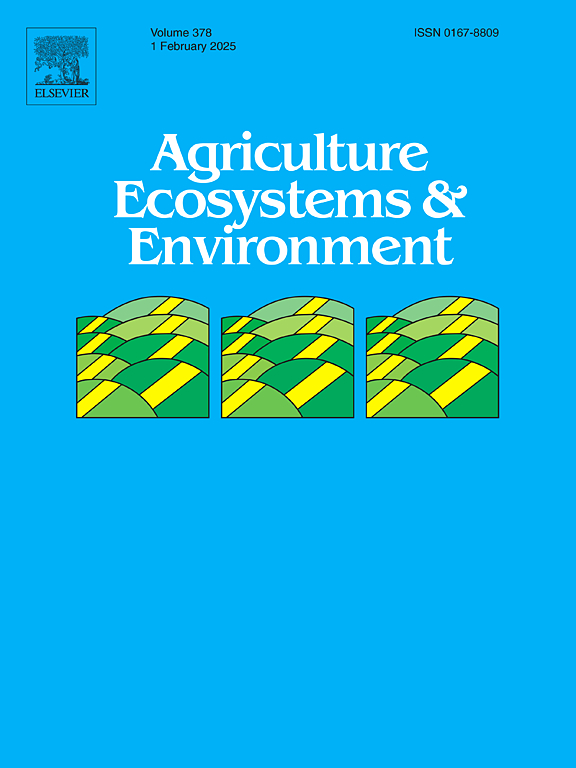Crop diversity enhances drought tolerance and reduces environmental impact in commodity crops
IF 6
1区 农林科学
Q1 AGRICULTURE, MULTIDISCIPLINARY
引用次数: 0
Abstract
Key challenges in agriculture include enhancing tolerance to extreme climatic events and reducing environmental impacts. While diversified crop rotations and cover crops are known to reduce pest incidence and improve soil health, their combined effects on production, especially during extreme droughts, remain unclear. To examine the impact of crop rotation diversity and cover crops on grain yield and pesticide footprint (measured by the Environmental Impact Quotient, EIQ) of rainfed maize and soybean in both normal and extremely dry years, we applied mixed-effects models to data from 1777 fields in Argentina. Overall, increasing crop rotation diversity reduced field EIQ, with the impact on grain yield varying based on crop type, nitrogen fertilization, and year. Maize yield improved with crop rotation diversity in the dry year, particularly with low nitrogen fertilization, reaching yields similar to those in normal year. Soybean yield, instead, was unaffected by either crop rotation diversity or cover crops. While grain yields of crops following cover crops and fallow were comparable, fields with cover crops showed a reduction in EIQ of up to 20 %. Diversified crop rotations emerge as an effective management strategy to alleviate drought and low nitrogen fertilization’s adverse effects on maize yield. Additionally, cover crops help reduce agriculture’s environmental impact without diminishing maize and soybean production. Our findings underscore the importance of crop diversification in developing a more sustainable agricultural system with reduced inputs and enhanced drought resilience.
求助全文
约1分钟内获得全文
求助全文
来源期刊

Agriculture, Ecosystems & Environment
环境科学-环境科学
CiteScore
11.70
自引率
9.10%
发文量
392
审稿时长
26 days
期刊介绍:
Agriculture, Ecosystems and Environment publishes scientific articles dealing with the interface between agroecosystems and the natural environment, specifically how agriculture influences the environment and how changes in that environment impact agroecosystems. Preference is given to papers from experimental and observational research at the field, system or landscape level, from studies that enhance our understanding of processes using data-based biophysical modelling, and papers that bridge scientific disciplines and integrate knowledge. All papers should be placed in an international or wide comparative context.
 求助内容:
求助内容: 应助结果提醒方式:
应助结果提醒方式:


